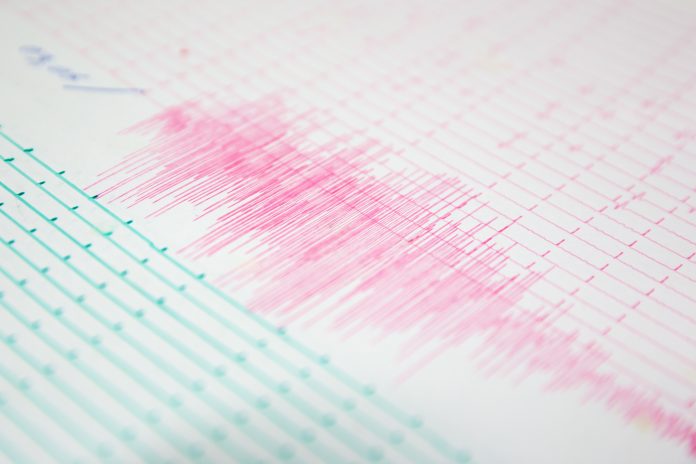Here, we learn about earthquakes in Taiwan, including the causes of them, the benefits of the Earthquake Early Warning System and the real-time seismic network in the country
The Central Weather Bureau (CWB) in Taiwan researches seismology, meteorology and provides earthquake reports. CWB also reports on sea conditions and makes astronomical observations. (1)
In a previous Open Access Government article from Deputy Director of the Seismological Center Central Weather Bureau (CWB) in Taiwan, we find out how the country’s quick earthquake alert system provides notification when it comes to ensuring disaster risk reduction.
“Several hazard earthquakes have occurred during our history. The most famous one was the 1999 Chi-Chi earthquake with Richter magnitude 7.3 in the middle of Taiwan, which killed more than 2,000 and caused mass building damage as well. The threat of an earthquake is, therefore, a serious issue today in Taiwan.”
Earthquake Early Warning System (EEW)
In the same article, we also find out that the CWB developed the Earthquake Early Warning System (EEW) to detect significant earthquakes quickly. This means that a warning can be issued about 10-15 seconds after the earthquake occurs. Alerts can be issues around 60 km away from the epicentre and as such, give seconds to 10s of seconds warning prior to the destructive shaking occurring. Nai-Chi Hsiao, Deputy Director of the Seismological Center Central Weather Bureau (CWB) explains more about the EEQ during the last five years, in his own words.
“Since 2014, CWB has provided the EEW warning directly to all the public schools, hazard-rescue agencies and other government departments in Taiwan. Since 2016, CWB has issued EEW warnings through the Public Warning System (PWS) to wireless devices of the general public. The PWS was developed and constructed by the government and communication Corp., which is based on the Cell Broadcast Service (CBS) on the 4G network. This means that all the people in high-risk area can receive an EEW warning at the same time! CWB also collaborates with TV companies to deliver instant live pop-up messages during the transmission of programmes.” (2)
The causes of earthquakes
Perhaps it is worth taking a step back now to briefly look at precisely what the causes of earthquakes are. According to the CWB, earthquakes can either be man-made, or they occur naturally. Generally speaking, we tend to experience naturally occurring earthquakes which can be divided into these areas:
- Tectonic earthquakes;
- Volcanic earthquakes and;
- Impacting earthquakes (like those caused by the impact of meteorites).
Among all these causes, earthquakes for the main part produced by crustal deformation (tectonic earthquakes), caused by plate movement, according to the CWB. On the CWB’s website, we find out more about the science behind earthquakes.
“Rock layers are stressed by pressures in the Earth. When the stress is stronger than the strength that the rock layer can withstand, the rock layer will move outward (dislocation). Such dislocations release a great deal of energy, producing elastic waves called seismic waves. When seismic waves reach the surface of the Earth, they cause shaking, also known as (an) earthquake.”
The real-time seismic network in Taiwan
Another important area the CWB highlights on their website concerns the establishment of the real-time Central Weather Bureau Seismic Network (CWBSN) in 1994. We know that observation stations distributed over Taiwan as well as in Kinmen, Lanyu, Penghu and Pengjiayu are part of this network. As part of this network, instruments are installed in every real-time monitoring stations which have a three-component (vertical, north-south, and east-west) short-period seismograph. We read more about this fascinating aspect of CWB’s on their website, which is extracted below.
“The ground motion signals recorded at these stations are digitally transmitted to the Central Weather Bureau by leased line and are stored for real-time processing, analysing, and archiving. If the earthquake is felt, the operating personnel will immediately release an earthquake announcement. All real-time signals are displayed in the analogue recorder at the centre, and it is convenient for the staff to check whether or not the earthquake information automatically determined by the real-time processing is correct. The digital data will be filed manually to form a data bank, which will be advantageous for future enquires.”
Closing remarks
While earthquakes are worthy of many more articles, we can gain encouragement from the fact that through means of the mass media, convenient telecommunication equipment and the Internet, the general public is alerted about earthquake information as soon as possible. (3)
To find out more about earthquakes in Taiwan, I can highly recommend you spend time browsing through frequently asked questions on the topic, here.
References
(1) https://en.wikipedia.org/wiki/Central_Weather_Bureau
(2) https://www.openaccessgovernment.org/disaster-risk-reduction-taiwan/59650/
(3) https://www.cwb.gov.tw/V7e/knowledge/encyclopedia/eq000.htm











